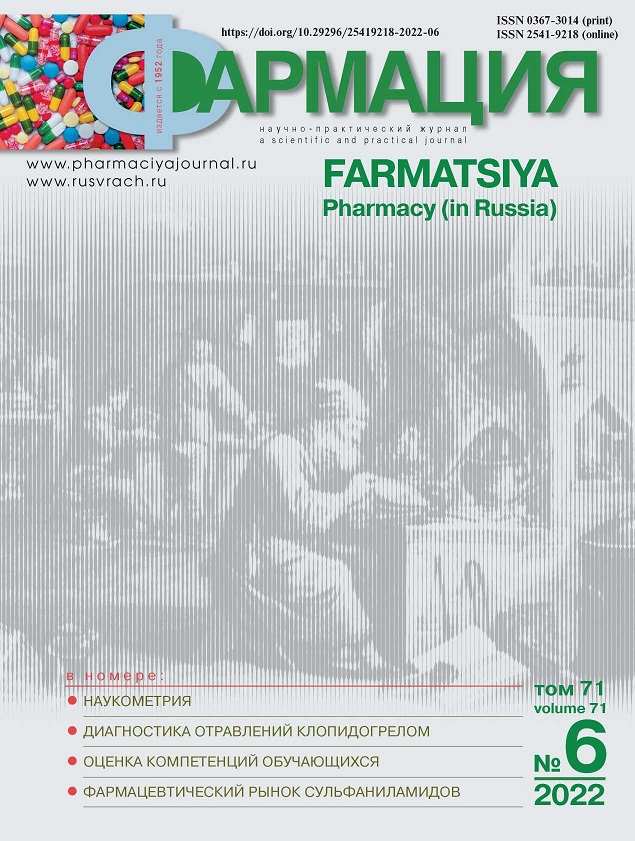Creation and technological research of dental gel with tizol and L-arginine
- Authors: Samoshina E.A.1, Stepanova E.F.2, Poroyskiy S.V.1, Saenko A.Y.2
-
Affiliations:
- FSBEI HE Volgograd State Medical University of the Ministry of Health of Russia
- Pyatigorsk Medical and Pharmaceutical Institute - branch of the FSBEI HE Volgograd State Medical University of the Ministry of Health of Russia
- Issue: Vol 71, No 6 (2022)
- Pages: 19-26
- Section: Technology of medicines
- URL: https://journals.eco-vector.com/0367-3014/article/view/113767
- DOI: https://doi.org/10.29296/25419218-2022-06-03
- ID: 113767
Cite item
Abstract
Introduction. In recent years, considerable attention has been paid to the prevention and treatment of inflammatory diseases of the oral mucosa. Treatment of inflammatory diseases of the oral mucosa is the most difficult direction in modern dentistry, including due to the insufficient assortment of appropriate medicines and especially due to the small choice of dosage forms, rational and comfortable. In modern domestic medicine, soft dosage forms with anti-inflammatory effect and penetrating action are now of justified interest, however, a complex of auxiliary substances is important for activating their action, which is expressed, contributes to ensuring the effectiveness and safety of treatment. Objective: to develop the composition and technology of a dental gel with tizol and L-arginine in the treatment of inflammation of the oral mucosa, its biopharmaceutical and rheological studies. Material and methods. Tizol is an aquacomplex of titanium glycerosolvate, a metal complex compound with anti-inflammatory and antimicrobial action. L-arginine is an essential amino acid - a nitrogen donor. Inhibits the risk of pathogens and the formation of bacterial biofilms in the oral cavity. Auxiliary substances: methylcellulose, glycerin, PEG 1500, PEG 400, vaseline, lanolin, lecithin, carbopol 940. The studies were carried out using dialysis through a cellophane membrane, L-arginine was determined spectrophotometrically by reaction with ninhydrin, rheological parameters were determined on a Brookfield RVDV II+Pro rotary viscometer. Results. As a result of the conducted studies, it was shown that the optimal gel-forming agent for the tizol - L-arginine complex is PEG 1500 and PEG 400; rheological parameters determined the viscosity values for tizol from 16,000 Pa/s to 11.68 Pa/s; pharmacological studies in animals showed a decrease in the area of granulation tissue and an increase in the area of connective tissue against the background of applications with the developed gel compared to the control. Conclusion. For the first time, a dental gel based on tizol with L-arginine has been developed.
Full Text
About the authors
Ekaterina Andreevna Samoshina
FSBEI HE Volgograd State Medical University of the Ministry of Health of Russia
Author for correspondence.
Email: ekaterina_samosh@mail.ru
senior lecturer of the Department, candidate of the Department of pharmaceutical technology with a course in medical biotechnology, Pyatigorsk Medical and Pharmaceutical Institute - branch of the Volga State Medical University of the Ministry of Health of Russia.
Eleonora Fedorovna Stepanova
Pyatigorsk Medical and Pharmaceutical Institute - branch of the FSBEI HE Volgograd State Medical University of the Ministry of Health of Russia
Email: efstepanova@yandex.ru
professor of the Department of pharmaceutical technology with a course in medical biotechnology
Sergey Viktorovich Poroyskiy
FSBEI HE Volgograd State Medical University of the Ministry of Health of Russia
Email: poroyskiy@mail.ru
head of the Department of disaster medicine
Anna Yuryevna Saenko
Pyatigorsk Medical and Pharmaceutical Institute - branch of the FSBEI HE Volgograd State Medical University of the Ministry of Health of Russia
Email: anitakool@yandex.ru
associate professor
References
- Сичко А.И., Кобелева Т.А., Смагина Т.А., Илиев К.И. Анализ препаратов местноанестезирующего действия в трансдермальных лекарственных формах с гелем «Тизоль»: методические рекомендации. Тюмень: ТюмГМА, 2016; 44.
- Аюпова Г.В. и др. Современные аспекты разработки и совершенствование состава и технологии лекарственных форм. Медицинский вестник Башкортостана. 2016; 11, 5 (65): 87-90.
- Бражник Е.А. Тизоль в комплексном лечении рожистого воспаления: материалы X. юбилейной международной научно-практической конференции молодых ученых-медиков, 26-27 февраля 2016 г. Курск, 2016; 99-101.
- Заливская А.В., Жилякова Е.Т. Анализ основ стоматологических гелей для лечения гингивита. Научный результат. Серия: Медицина и фармация. 2016; 2, 1 (7): 53-8.
- Матохина М.В., Емельянова И.В., Петров А.Ю., Мельников О.А. Исследование комплексообразующих свойств основы Тизоль геля. Научные ведомости Белгородского государственного университета. Серия: Медицина. Фармация. 2017; 38, 12 (261): 112-9.
- Кулешов С.М., Кулешова Т.Г. Использование гелей в медицине и ветеринарии. Аграрный вестник Приморья. 2016; 2 (2): 15-6.
- Македонова Ю.А., Фирсова И.В., Афанасьева О.Ю. и др. Немедикаментозные методы лечения эрозивно-язвенных поражений полости рта (обзорная статья). Волгоградский научно-медицинский журнал. 2016; 1: 8-10.
- Овечкина М.В. Изучение патоморфологических изменений тканей десны при лечении хронических воспалительных и воспалительно-деструктивных заболеваний пародонта с использованием регенеративного метода на основе аутологичной тромбоцитарной плазмы. 4.II. Пародонтология. 2015; 20, 3 (76): 23-6.
- Михальченко Д.В., Македонова Ю.А., Поройский С.В. и др. Особенности микроциркуляции полости рта при воспалительно-деструктивных заболеваниях. Кубанский научный медицинский вестник. 2016; 4: 85-9.
- Позднякова Т.А. Основные направления совершенствования технологии изготовления и контроля качества мазей. Актуальные проблемы в современной науке и пути их решения: сборник статей по материалам международной научно-практической конференции. 2016; 3 (24), ч. 4: 153-5.
- Самошина Е.А., Степанова Э.Ф., Поройский С.В. Противовоспалительные наружные лекарственные средства: использование в стоматологии. Журнал Фармацевтическое дело и технология лекарств, изд. Панорама № 1. 2022; 55-9.
- Федотова Ю.М., Македонова Ю.А., Поройский С.В. и др. Современные аспекты лечения эрозивноязвенной формы красного плоского лишая слизистой оболочки полости рта: [Элекронный ресурс]. Современные проблемы науки и образования. 2016; 2. Режим доступа: URL: http://www.science-education.ru/article/view?id=24325.
- Хуртина А.С., Бурцева Т.В. Несовместимость лекарственных средств (обзор литературы). Журнал молодежь и наука. 2019; 2: 48.
Supplementary files










